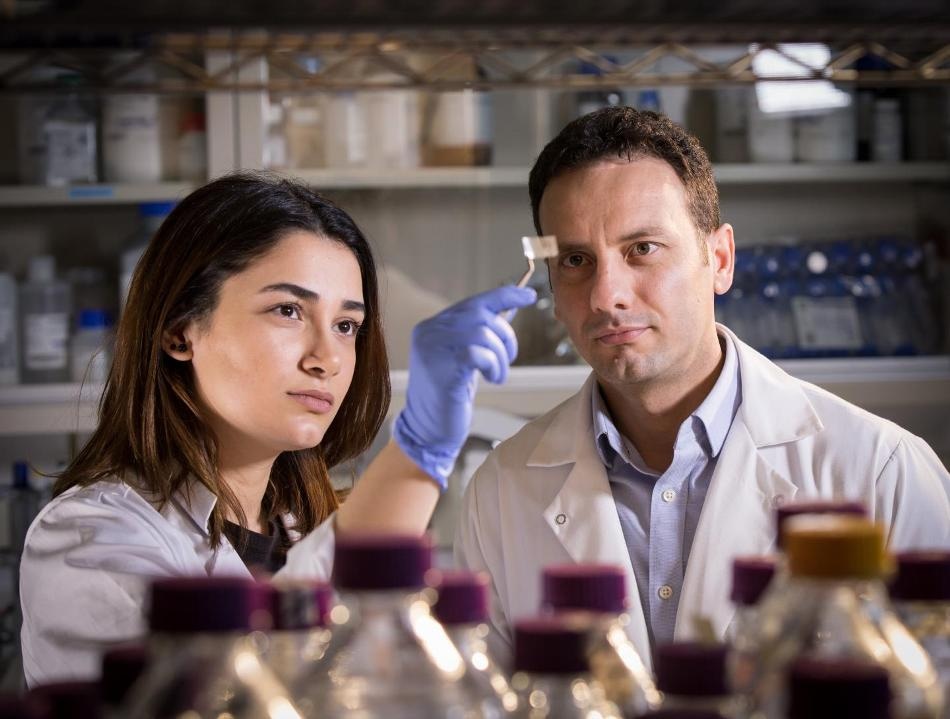Apr 9 2018
Researchers at McMaster University have developed a test solution to answer the delicate yet critical question ‘Is that meat still good?’ ‘Are you sure?’ Their test confirms with certainty if the meat and other foods are safe to consume or need to be thrown away.
 Researchers Hanie Yousefi and Thid Didar examine a transparent patch, which can be used in packaging to detect pathogens on food. (Image credit: McMaster University)
Researchers Hanie Yousefi and Thid Didar examine a transparent patch, which can be used in packaging to detect pathogens on food. (Image credit: McMaster University)
The team comprising of McMaster mechanical and chemical engineers, working closely with biochemists from across campus, have come together to develop a transparent test patch, printed with non-toxic molecules, that can signal contamination as it occurs. The patch can be added directly into food packaging, where it can monitor the contents for dangerous pathogens such as Salmonella and E. coli.
The new technology has the potential to swap the traditional "best before" date on both food and drinks with a conclusive indication that it is time to pour out that milk or throw out that roast. Details of the technology can be found in the research journal ACS Nano.
"In the future, if you go to a store and you want to be sure the meat you're buying is safe at any point before you use it, you'll have a much more reliable way than the expiration date," says lead author Hanie Yousefi, a graduate student and research assistant in McMaster's Faculty of Engineering.
If the food or drink inside the package has a pathogen, it would activate a signal in the packaging that could be read by a smartphone or other basic device. The test itself does not impact the contents of the package.
According to the World Health Organization, foodborne pathogens cause approximately 600 million illnesses and 420,000 deaths annually. About 30% of those cases involve children aged five and under.
The researchers have named the new material "Sentinel Wrap" in honor of the McMaster-based Sentinel Bioactive Paper Network, an interdisciplinary research network that worked on paper-based detection systems. That network's research eventually brought about the new food-testing technology.
Chemical engineer Carlos Filipe and mechanical-biomedical engineer Tohid Didar worked closely on the new detection project.
The signaling technology for the food test was created in the McMaster labs of biochemist Yingfu Li.
"He created the key, and we have built a lock and a door to go with it," says Filipe, who is Chair of McMaster's Department of Chemical Engineering.
Large-scale production of such a patch would be moderately cheap and simple, the researchers say, as it is possible to print the DNA molecules that detect food pathogens onto the test material.
"A food manufacturer could easily incorporate this into its production process," says Didar, an assistant professor of mechanical engineering and member of the McMaster Institute for Infectious Disease Research.
The team states that to get the invention to market, they would need a commercial partner and regulatory approvals. They highlight that the same technology could also be employed in other applications, such as bandages to specify if wounds are infected, or for wrapping surgical instruments to assure they are disinfected.